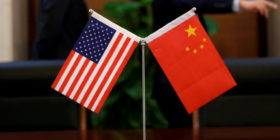India’s new prime minister, Narendra Modi, celebrated his 64th birthday on Wednesday by hosting President Xi Jinping of China in his home state of Gujarat, as the leaders of Asia’s two giants lay the foundation for a long-term relationship that carries huge stakes for both.
It is the first visit of a Chinese president to India in eight years – only the third in history – and the reasons for mutual good will are compelling.
China has the ability to channel billions of dollars into Indian infrastructure and manufacturing projects, allowing Modi to pursue the job-creation agenda that was at the heart of his campaign. China, meanwhile, needs calm on its southwestern border to offset tense relationships with Japan, Vietnam, the Philippines and the United States. State-run Chinese newspapers have lavished praise on Modi, intimating that he has the potential to set India on a Chinese-style economic growth trajectory.
But those interests are balanced by deep historical mistrust on security matters.
Indeed, even as India prepared an opulent riverfront dinner for Xi in Gujarat this week, troops and slogan-chanting civilians were facing off along the disputed border between China and India, where the two countries fought a brief war in 1962. India has discussed beefing up maritime cooperation with the navies of Australia and Japan and proposed tighter defense and energy ties with Vietnam – all moves that could be seen as a challenge to China. Meanwhile, China is building ports and other facilities throughout South Asia, a so-called string of pearls strategy that India views warily.
M.J. Akbar, a spokesman for Modi’s Bharatiya Janata Party, said the new government would assert India’s role as a leading power in the region without fear of irritating China.
“I think that China doesn’t respect you unless you respect yourself,” Akbar said. He added, “I think China is very clear that no element of confrontation should escalate to the point of hostility, because it knows that its economic project is still far from complete.”
The Chinese leader’s three-day visit will be marked by a charm offensive on both sides. In what officials described as an unusual gesture, Modi agreed to greet Xi in person Wednesday when he arrived at his hotel in Ahmadabad, the commercial hub of Gujarat. The two were then scheduled to meet at a private dinner on the Sabarmati Riverfront, a project that the Indian leader championed, replacing sprawling riverfront slums with a broad, concrete, modernist promenade.
In a commentary published Wednesday in The Hindu, a daily newspaper, Xi argued for closer economic cooperation between China and India, which he described as “the world’s factory” and the “world’s back office.” He said China could help India improve its infrastructure and manufacturing base and open Chinese markets to Indian pharmaceuticals and IT services – a move that could narrow the $30 billion trade imbalance between the two countries.
In an editorial in Global Times, a pro-government English-language newspaper published in Beijing, a Chinese policy analyst said that Indian support had become essential because three-quarters of China’s imported oil passes through the Indian Ocean.
“For a long time, South Asia has been a weak link in China’s peripheral diplomacy,” wrote the analyst, Zhao Minghao, an adjunct fellow with the Center for International and Strategic Studies at Peking University.
Warm ties between South Asian governments and Washington and Tokyo “sound an alarm for Beijing,” he wrote.
“Compared with the U.S. and Japan, China shows more understanding of the urgent needs of South Asian countries for an economic boost,” he wrote.
Since taking office in May, Modi has surprised many by making foreign policy a major focus, often taking unexpected risks, like inviting Pakistan’s prime minister, Nawaz Sharif, to attend his swearing-in. After early visits to India’s neighbors Bhutan and Nepal, he spent five days as the guest of Prime Minister Shinzo Abe of Japan, with whom he shares a bond so cordial that newspapers have referred to their relationship as a “bromance.”
His diplomatic blitz will culminate with a visit to the United States at the end of the month. The United States has had little opportunity to build a relationship with Modi, largely because it imposed a punitive visa ban after religious riots broke out in Modi’s home state in 2002. The United States also lacks the economic leverage of China and Japan, who can offer major investment in Indian projects.
The United States can, however, throw its support behind some projects that matter to Modi, like the development of smart cities and the manufacture of U.S.-designed weapons in India. And whether or not it is openly discussed, the United States is closely allied with Japan and can play a balancing role in maritime security disputes with China, a subject that is clearly on Modi’s mind.
Modi gave a hint of his strategic thinking in an address to business leaders in Tokyo earlier this month. While Modi made no specific mention of China, his remarks were understood by many as a commentary on Beijing’s military and economic muscle-flexing.
“The world is divided in two camps. One camp believes in expansionist policies while the other believes in development,” Modi said. “We have to decide whether the world should get caught in the grip of expansionist policies or we should lead it on the path of development and create opportunities that take it to greater heights.”






Leave a reply